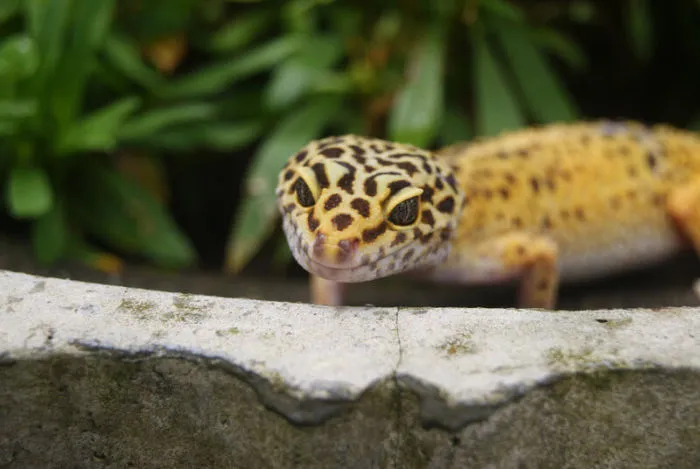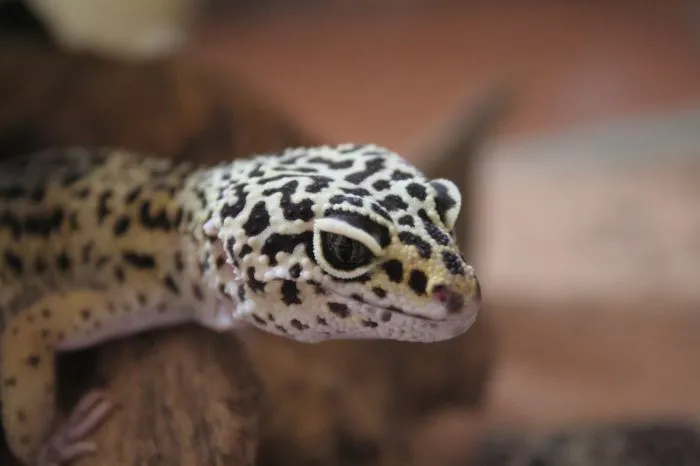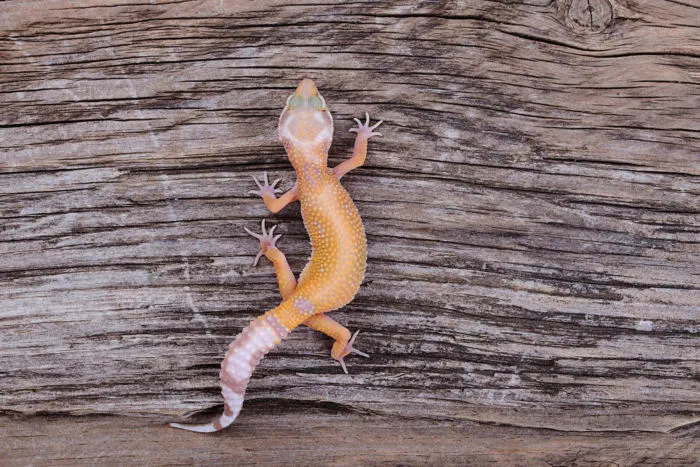 So, you clean the habitat daily. You provide a healthy diet of insects, freeze-dried
So, you clean the habitat daily. You provide a healthy diet of insects, freeze-dried
And yet, you aren’t finding any poop from your leopard gecko. This is concerning because that stuff needs to come out not only for your peace of mind but for your gecko’s comfort, health, and longevity.
This article discusses five of the most common reasons behind your geck0 having trouble producing feces, and what you as an owner can do about it.
First, Let’s Talk…
Don’t worry if your leopard gecko hasn’t gone to the bathroom for a few days. Is he or she acting like themselves? This is normal and okay. But, if it’s been 5 or more days, it’s time to start taking action.
Oddly enough, dogs and leopard geckos have this in common: They like to go to the toilet in the same spots. Did their surroundings change recently? If you moved around the items in their habitat, they may be confused about where to “go”.
I Modified the Habitat!
Did you have someone else clean the
Were your hands scented with a strong soap? If yes, we highly recommend using this soap instead from now on. It’s unscented and natural, so no dangers for your leo.
I mean, cleaning the gecko
It may take your leopard gecko a few days to fight through these smells and find the spot where they once did their business.
Give your leopard gecko a grace period of one week. Your leo should poop again once he establishes a new spot.
You can even set down a paper towel that you used for cleaning up poop so that your gecko smells his feces and has an easier time finding a spot to go.
Make Sure He’s Eating
If your leopard gecko is not eating, then he surely cannot go to the toilet.
If he is not eating what you are providing, then try out something different. Also, check your leo out to make sure he is in good health.
Watch him to make sure his personality is intact: after all, lethargy, injury or stress can make a being lose their appetites pretty quick.
Keep a close eye to make sure you don’t need to schedule a vet visit. Also watch for other pets that might be getting into the habitat, or a young family member who excessively handles or interacts with the gecko.
How Often Do These Reptiles Poop?
Most leos will go to the bathroom once per day, but baby leopard geckos will go about 2 or 3 times each day. Some leopard geckos will poop just a few times each week (more on that here).
It is all dependent on the age of your reptile, and the frequency of your feedings. A leopard gecko that eats each and every day will go the bathroom more often.
Keep in mind that these little guys can go without pooping for about five days. Once again, if you notice your gecko is not going to the toilet after this length of time, it may be indigestion or constipation that is holding him up.
Five Main Reasons Your Leopard Gecko Isn’t Pooping
1. Your Leopard Gecko Ate Substrate
Impaction is a big problem, but it has an easy fix. Loose substrate can cause your gecko to become impacted. The definition of impacted is, according to Merriam-Webster, “blocked by a material that is wedged in position in an impacted colon.”
Using loose substrate in the habitat for any reason can lead your leopard gecko to become impacted and therefore unable to go to the bathroom.
Younger leos have a big problem with this, after all, they are young reptiles just learning about their world and trying everything. Do not use loose substrate in your baby leopard gecko’s habitat.
Examples of loose substrate include sand and wood chips, among other examples. Your baby leopard gecko may lick or eat the sand or chips, which can block them up.
However, the true reason for actively eating substrate (and becoming impacted) is a lack of minerals. In the wild, Leopard geckos and many other reptiles eat dirt to balance their minerals.
Their instincts tell them to do that as well in captivity. However, the loose substrate that we provide our leopard geckos is not suited for that as it is not digestible and contains no minerals.
That’s why a leo that wants to balance its minerals continue to eat and eat and eat substrate. The easy fix is providing a calcium source at all times.
Break this sepia bone into small pieces and offer it in a bowl at all times. The leo will learn where it can get proper minerals and will stop eating substrate as there is no need for it anymore.
Further, you should always dust your feeder insects with calcium powder like this one.
2. Your Leopard Gecko Ate Large Insects
It is important that you offer feeder insects that are not too big for your gecko. Impaction and constipation can happen if the
The insects should not exceed the width between the eyes of your leopard gecko. We highly recommend these crickets (check them here). They have a good size for adult leopard geckos, they are cheap, and they are already gut-loaded.
Hard-shelled insects are okay, but you should remove the hard shell before you give them. Failure to do so could result in not only impaction but paralysis.
It may seem like a great idea and a good challenge for your leo to hunt and eat something a bit bigger, but it’s better to play it safe.
Recommended articles to read:

3. Your Leopard Gecko is Living in Low Temps
If it is too cold inside your leo’s
Keep track of temps by using a digital thermometer on the cool and warm
With a temperature gun, you can measure the temperature wherever you want in the
The ideal temps of a leo’s
- Floor temp underneath lamps/warm hides: 88 -92 degrees °F
- Air temp about 5 in off the ground: 73-76 degrees °F
- Cool side air temps 5 in off the ground: 73-76 degrees °F
- Night temps: 67-74 degrees °F. Ideally, you want to shoot for 70-74 degrees °F.
4. Your Leopard Gecko Has Deadly Parasites in His Guts
Parasites can make your leo refuse to eat, period. This lack of eating can lead to not being able to defecate. These parasites may cause lethargy or result in a weak appetite.
Watch for signs like rapid weight loss or even runny stools when it comes to these ailments. To learn more about how to detect symptoms of parasites in your leopard gecko, we highly recommend reading this book. It’s fantastic!
If you suspect that your leo is affected by a parasite, then it is time to get him to a vet right away.
5. Your Leopard Gecko Isn’t Getting Enough Water
Even in our human world, we are bombarded with the message that drinking water is good for our health.
The same goes for your beloved leopard gecko. It is critical that your reptile friend gets the water he needs for digestion, hydration, and general good health.
While you may think you are doing a great job of keeping up on the water, you may need to reevaluate your efforts if your leo is not pooping.
A dehydrated leo is less likely to be “regular” when it comes to defecation. It is critical your gecko has enough water, so the digestive tract is smooth, healthy, and able to push out waste.
Many leos get their moisture from the bugs they eat, so make sure the feeder insects you provide get moisture when you gut-load. Veggies, fruits, or a complete cricket food like this one can help with that.
The signs of a dehydrated leopard gecko are easy to see; look for eyes that are sunken in, wrinkly skin, folded skin, lack of urates (these are yellow in color and solid) and of course lack of feces.
Another small test you can perform is to gently pinch the skin of your gecko and see what happens. If it goes back to normal after you let it go, then he is likely not dehydrated.
If it stays folded, then you need to get the gecko some water. Make sure fresh water is in a bowl in the
Another thing you can do is to place in a wet paper towel or napkin. Your gecko can lick from the napkin. You may also bathe your gecko, although many will NOT enjoy this.
By the way, Leopard geckos are not really meant to swim, read here what that means for your next Leo bath!

Bathing Your Leopard Gecko
Find a plastic container that is larger than your gecko and put a paper towel or cloth on the bottom of it. This helps your leo feel relaxed. You can also use this reptile pool with a ramp and let your leo go in or out on its own terms.
Fill up the container with a tiny amount of water, just enough to make a half-inch of water in there. It should only go to his knees. Don’t fill higher than that or your gecko will become stressed out.
Keep the water temp lukewarm. About 86 degrees F is fine for your gecko. Remember, these reptiles are cold-blooded. If the water gets cold, this will feel very unpleasant for the animal.
Put the gecko gently and carefully into the water. Allow him to soak for about 5 or so minutes, longer if you can manage it. Ten minutes is enough.
You may use this opportunity to help your gecko remove any shed that is stuck. Use a q tip or tweezers to gently get rid of that excess skin.
After all, removal of this skin is healthy for your reptile. Leaving it there can cut blood circulation, which leads to geckos losing toes.
Give your gecko a bath after shedding takes place as you can use this as a way to help get rid of excess skin. If you don’t see shed skin, bathing is not necessary unless you would like to help them get hydrated.
More on Tank Humidity
Earlier we discussed having a humid
After all, your
You should fill a moist hide with sphagnum moss and spray some water there when you notice your gecko begin to shed. He will look pale and white when this happens.
For a moist hide you need:
You may also allow your leo to have a soak in the water dish in his habitat. Be sure that you change the water once he has done this-and also verify the water is not dangerously deep.
We highly recommend reading our Leopard gecko water guide here for more information!
What Else Can I Do to Get My Gecko to Poop?
Got another gecko? Take a piece of their poop and put it in the habitat of your non-pooping gecko. Wear disposable rubber gloves. Use a paper towel to pick up the poop and then put it in another section of the habitat.
Another idea is to give your gecko a gentle rub. Most leopard geckos do not like to be handled, so keep this short and sweet. Just rub the belly gently with your finger – this could help get things moving for your leo.
Do this late at night, not in the mornings or in the daytime. Geckos thrive at night, so keep rubs restricted to those hours.
Lastly, do your best to make sure that the habitat is set up, so your gecko is happy. Leopard geckos love it when it’s dark, so minimize stress by keeping it dark if necessary.
It’s fun to see them in the daytime but cover the habitat side with dark cloth or paper to keep them calm, happy and healthy.
Conclusion
As a leopard gecko owner, you will find that owning this reptile is very rewarding but requires a good amount of upkeep on your part.
Daily cleanings of the habitat will help you recognize when your leo is not going to the bathroom as he normally does.
By closely monitoring your leopard gecko each day, you can be certain when they are not acting like their usual self, and this will make it easier to take the necessary steps to remedy any issues that might be bothering your pet.
As always, rule out any of the above issues first-and if your gecko still hasn’t gone to the bathroom, schedule a vet visit immediately.
- Enchi Ball Python: A Unique and Stunning Morph of Python regius - March 27, 2025
- Emerald Tree Monitor: The Enigmatic Green Guardian of the Rainforest - March 26, 2025
- The Egyptian Cobra (Naja haje): A Fascinating Serpent - March 25, 2025

Rose
Saturday 10th of April 2021
My son has a leopard gecko 🦎 named Indy. She has not gone to the bathroom in over a week. Does not like the water nor being picked up much she is 1 yrs old. The vet says give a warm bath tried that before and hates it. I don’t want to get bit. Any suggestions I don’t want to stress her out!
Pierre And The ReptileCraze Team
Thursday 22nd of July 2021
Hey Rose,
I understand that you don't want to stress Indy out but if the vet said you should give Indy a bath so that she can relief herself, you should definitely do that.
Put on a pair of gloves so that the bites won't hurt and see if the bath helps Indy to poop.
All the best,
Pierre and the ReptileCraze.com-Team